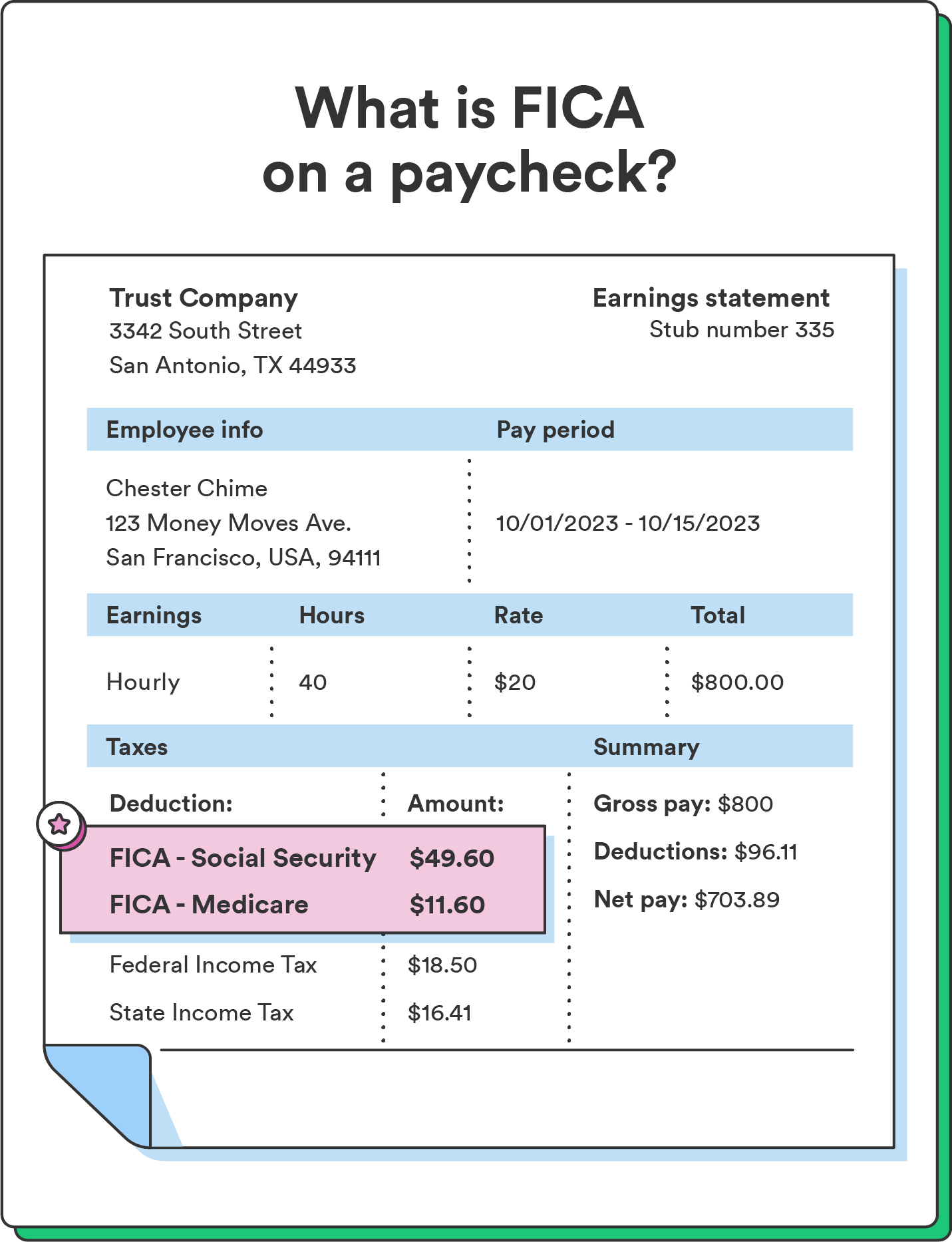Note that FICA is not one deduction – it’s a combination of Social Security and Medicare taxes.

Social Security tax
This tax contributes to the Social Security program, which acts as a safety net for your retirement. It’s like setting aside a portion of your earnings to ensure financial stability later in life.
Both employers and employees have to withhold 6.2% of their gross earnings for this tax, up to a maximum wage base limit (the maximum amount of your earnings that’s subject to be taxed). This year, this limit is $160,200 – meaning only earnings of $160,200 or less are subject to this tax.¹
Medicare tax
The Medicare tax funds the Medicare program, which provides essential health care coverage for those aged 65 and older. It’s your investment in future medical security.
Employers and employees are both required to withhold 1.45% of their earnings for Medicare taxes.¹ While the Social Security tax has an income limit, there is no maximum wage base for Medicare tax, so all your earned income is subject to this tax.¹
However, earners who reach a specific income threshold (based on filing status) should also be aware of the Additional Medicare tax.
This is an extra tax on top of the standard Medicare tax rate. This year, the Additional Medicare tax rate is 0.9% if you earn more than $200,000 as a single filer or $250,000 for joint filers.¹
| Employee pays: | Employer pays: | |
| Social Security tax | 6.2% (for the first $160,200) | 6.2% (for the first $160,200) |
| Medicare tax | 1.45% | 1.45% |
| Total | 7.65% | 7.65% |
| Additional Medicare tax | 0.9% (for earnings over $200,000 for single filers and $250,000 for joint filers) |


